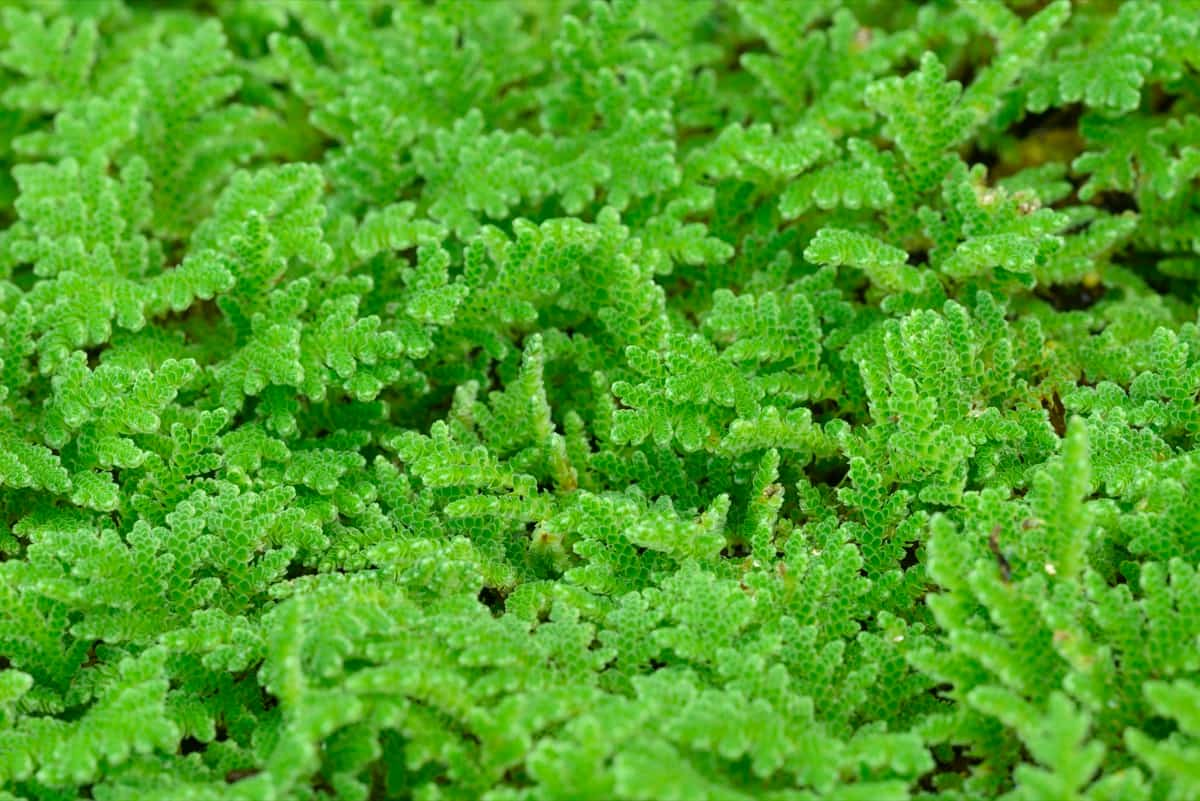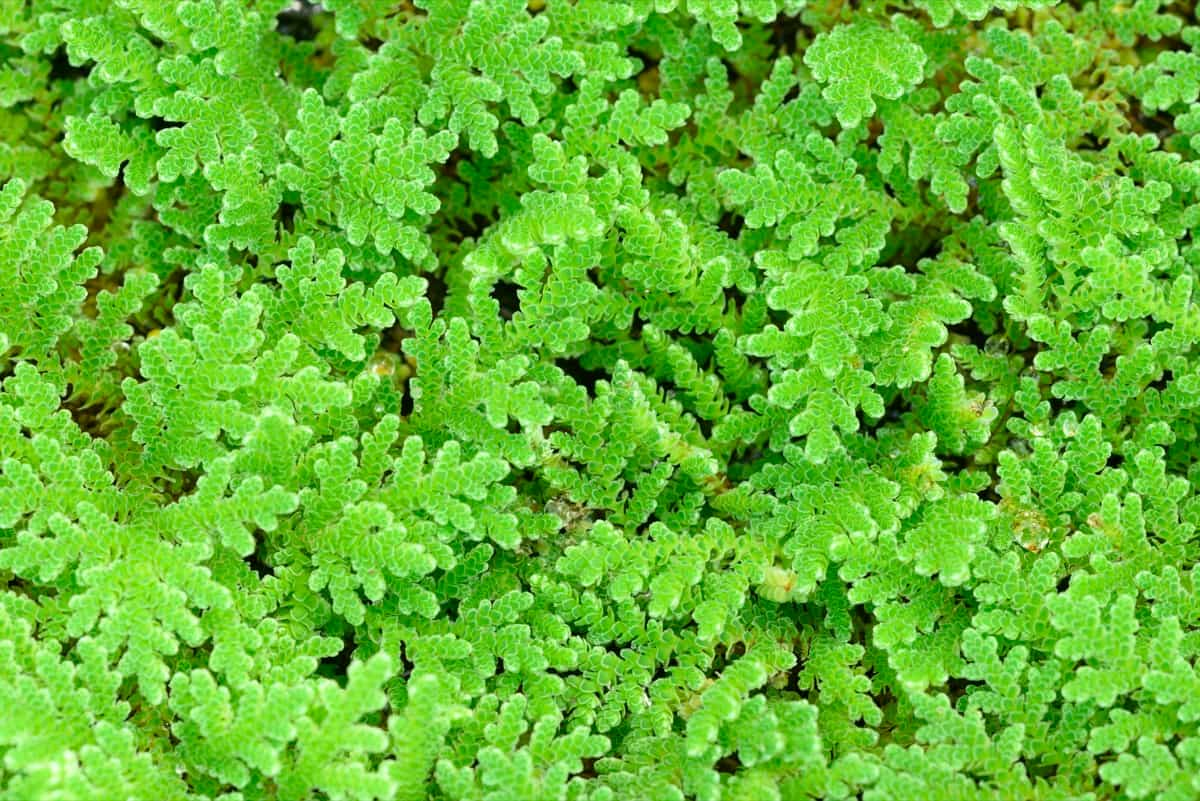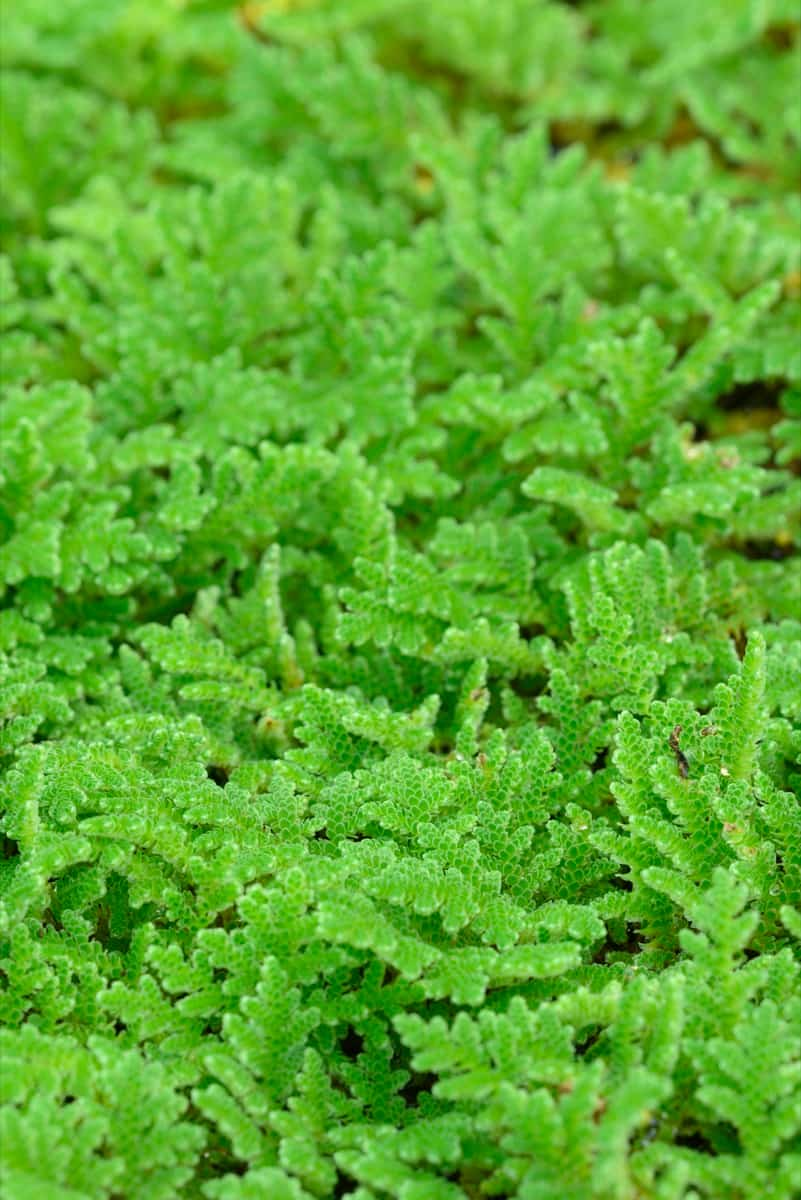Azolla is commonly known as water fern or mosquito fern. It has gained increasing importance over the years due to its nutrient-rich properties and potential use as animal feed. This water fern has a symbiotic relationship with nitrogen-fixing cyanobacteria, which makes it a rich source of proteins, amino acids, vitamins, and minerals. Here, we will discuss into the depths of azolla production and its benefits as a viable animal feed.

Guide to Azolla Fodder/Feed
Azolla Cultivation
Cultivating azolla for commercial production is a fascinating process that capitalizes on the fern’s rapid growth rate and high nutritional value. A typical azolla cultivation procedure starts with selecting a fertile strain, with Azolla pinnata being the most popular. These strains are then propagated in shallow, water-containing fields or artificial containers like cement tanks, plastic sheets, or even old bathtubs. To initiate azolla cultivation, a flat ground surface is required to retain water at a depth ranging from 5 to 10 cm.
This surface can be covered with a black plastic sheet to avoid any water seepage. After preparing the designated area, approximately 10 kg of thoroughly decomposed cow dung or alternative organic fertilizer is blended into the water, resulting in a nutrient-enriched medium. A small quantity of azolla (around 500 grams per square meter) is introduced into the water. The azolla quickly reproduces by splitting and regrowing, covering the entire water surface within two weeks. A well-cultivated azolla pond can yield approximately 10 to 15 tons per acre per year.
Azolla Production Procedure
To enhance azolla production per square meter, a certain degree of management and maintenance is required. The water level needs to be consistently maintained, and the azolla should be harvested every 5-10 days, leaving just enough to regrow and cover the pond again. The harvested azolla can be used immediately as feed or dried and stored for future use.
In terms of nutrient supplementation, Azolla’s requirements are quite low. It requires only nitrogen, phosphorous, potassium, and trace amounts of other essential minerals to thrive. However, if your azolla grows slowly, you can supplement it with additional nutrients, including NPK fertilizer and trace minerals like iron, molybdenum, and copper.
One important aspect of the azolla production procedure is the control of pests and diseases. While azolla is relatively resistant to many pests, it can sometimes be afflicted by pests such as the azolla weevil and diseases such as anthracnose caused by the fungus Colletotrichum azollae. Regular monitoring and prompt application of organic pesticides and fungicides can help to keep these problems in check.
Azolla Production Per Acre
Azolla production per acre has the potential to reach staggering heights, considering its rapid growth rate. As mentioned, an adequately managed azolla farm can yield 10 to 15 tons per acre per year. However, these numbers can vary based on environmental conditions, the specific strain of azolla being used, and the management level applied.
In case you missed it: Ultimate Guide to Legume Fodder Crops: Cowpea, Desmanthus, Lucerne, and Stylo

For instance, azolla tends to grow faster in warmer climates, leading to higher yields. However, in colder climates, growth may be slower, which can reduce the overall yield. Additionally, specific strains of azolla, such as Azolla pinnata, tend to be more prolific and produce higher yields than others.
Azolla as Animal Feed
Azolla’s role as a beneficial animal feed cannot be understated, particularly for livestock and poultry. Packed with a high protein content ranging from 25 to 35%, azolla also contains essential vitamins (such as A, B, and C), minerals, and trace elements that provide the necessary dietary balance for animals. This unique nutrient profile of azolla makes it an incredibly valuable asset in animal husbandry.
When consumed by livestock, the high protein and nutrient content of azolla help to improve their overall health and productivity. It can supplement traditional fodder, reducing reliance on increasingly expensive feed grains. In dairy farming, incorporating azolla as a feed for livestock has demonstrated positive outcomes by boosting the quantity of milk produced by dairy cows. Likewise, in the poultry industry, using azolla as a feed supplement promotes increased egg production and contributes to the overall well-being of the birds.
Moreover, azolla has also proven effective in pig and fish farming. When used as feed for pigs, azolla helps to reduce the foul smell of pig manure by reducing the ammonia levels in it. As for aquaculture, azolla helps to improve the water quality by absorbing excess nutrients, and it also serves as a nutritious feed for various fish species.
The use of azolla as animal feed does not necessitate significant processing. Freshly harvested azolla can be directly used as feed, but care should be taken not to overfeed, as this can lead to spoilage. Alternatively, azolla can also be sun-dried and stored for later use, though it should be noted that drying may reduce its nutritional value.
Enhancing Azolla’s Nutrient Value as Animal Feed
Azolla’s nutrient composition makes it a superb feed supplement for livestock. However, there are ways to enhance its nutritional value even further. One such method involves the co-cultivation of azolla with other microorganisms. Studies have shown that co-cultivation of azolla with certain types of bacteria or fungi can enhance its protein content and digestibility, improving its value as animal feed.
For example, co-cultivation with the bacterium Azospirillum can enhance the nitrogen-fixing ability of azolla, leading to higher protein content. Likewise, the process of growing azolla alongside the white-rot fungus Pleurotus ostreatus has been demonstrated to improve the ability of animals to digest azolla, resulting in easier absorption and utilization of this plant.
Another way to enhance azolla’s nutrient value is through proper post-harvest processing. Although azolla can be utilized as animal feed in its fresh state, drying and pelletizing the azolla can enhance its longevity and facilitate its handling and transportation. However, it should be noted that improper drying can reduce the nutrient content of azolla, so care should be taken to dry it properly.
In case you missed it: Ultimate Guide to Cereal Grass Fodder Crops: Maize, and Sorghum

Conclusion
Azolla is an immensely valuable asset to agriculture, particularly regarding animal feed. It is cost-effective, easy to cultivate, and provides a rich source of nutrients for livestock. It not only helps to reduce feed costs but also contributes to better animal health and productivity.
- Feed Your Flock for Less: Top 10 Tips to Save on Chicken Feed
- Ultimate Guide to Ossabaw Island Hog: Breeding, Raising, Diet, and Care
- Hatching Answers: The Top 10 Reasons Your Chickens Aren’t Laying Eggs
- Eggs and Economics: Breaking Down the Cost of Raising Backyard Chickens
- Defend Your Greens: Proven Methods to Keep Iguanas Out of Your Garden
- Ultimate Guide to Cinnamon Queen Chicken: A Comprehensive Guide for Beginners
- Ultimate Guide to California Tan Chicken: Breeding, Raising, Diet, Egg-Production and Care
- Ultimate Guide to Marsh Daisy Chicken: Breeding, Raising, Diet, and Care
- 10 Types of Chicken Farming Businesses You Can Start for Profits